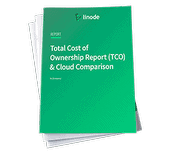Networking - VLANs
Linode’s VLANs (Virtual Local Area Networks) feature allows you to create private L2 networks in the cloud where Linodes can communicate privately and securely. Two or more Linodes connected via the VLAN can see each other as if they were directly connected to the same physical Ethernet network.
Availability
Atlanta, GA, USA; Mumbai, India; Sydney, Australia; Toronto, Canada;
Features
Secure and Private Communication
Create a private L2 network and attach your Linodes to it for secure and private communication in the cloud. Two or more Linodes connected via the Private VLAN can see each other as if they were directly connected to the same physical Ethernet network. Devices outside of the network cannot see any traffic within the private network.
Simple Configuration
Use the Cloud Manager to create a VLAN and attach Linode’s to it in just a few clicks. Create up to 10 VLANs per data center, and apply up to 3 VLANs to a single Linode. For more fine-grained control, use the Linode APIv4 or Linode CLI.
Reduce Network Transfer Costs
Private network transfer is free. Any communication between Linodes over the private VLAN does not count against your monthly network transfer usage.
Pricing
VLANs are free to use. Communication across your private network does not count against your monthly network transfer usage.
Limitations
VLANs are region-specific. Once created, a VLAN can only be attached to other Linodes within the same data center.
An account can have up to 10 VLANs per region.
A Linode can belong to a maximum of 3 VLANs. Since there are 3 configurable network interfaces on each Linode, up to 3 VLANs can be attached. If one of those network interfaces is configured for the public internet, there are 2 remaining network interfaces for use with VLANs.
VLANs cannot be manually renamed by the user. If a VLAN’s label must be changed, a new VLAN can be created and all required Linodes can be attached to that new VLAN.
VLANs cannot be manually deleted by the user. There is no need to manually delete a VLAN. If a VLAN is no longer needed, simply detach it from all Linodes. After this, it will automatically be deleted within a short timeframe.
Network Helper is required for automatic configuration. If Network Helper has been disabled, the Linode will not automatically be able to communicate over the VLAN’s private network. In this case, advanced users can manually adjust their Linode’s internal network configuration files with the appropriate settings for their VLAN. See Manually configuring a VLAN on a Linode for instructions.
The Public Internet must always use the eth0 network interface. While VLANs themselves can function without issue on the
eth0interface, the public internet on Linode will not be networked correctly on other interfaces.
This page was originally published on





